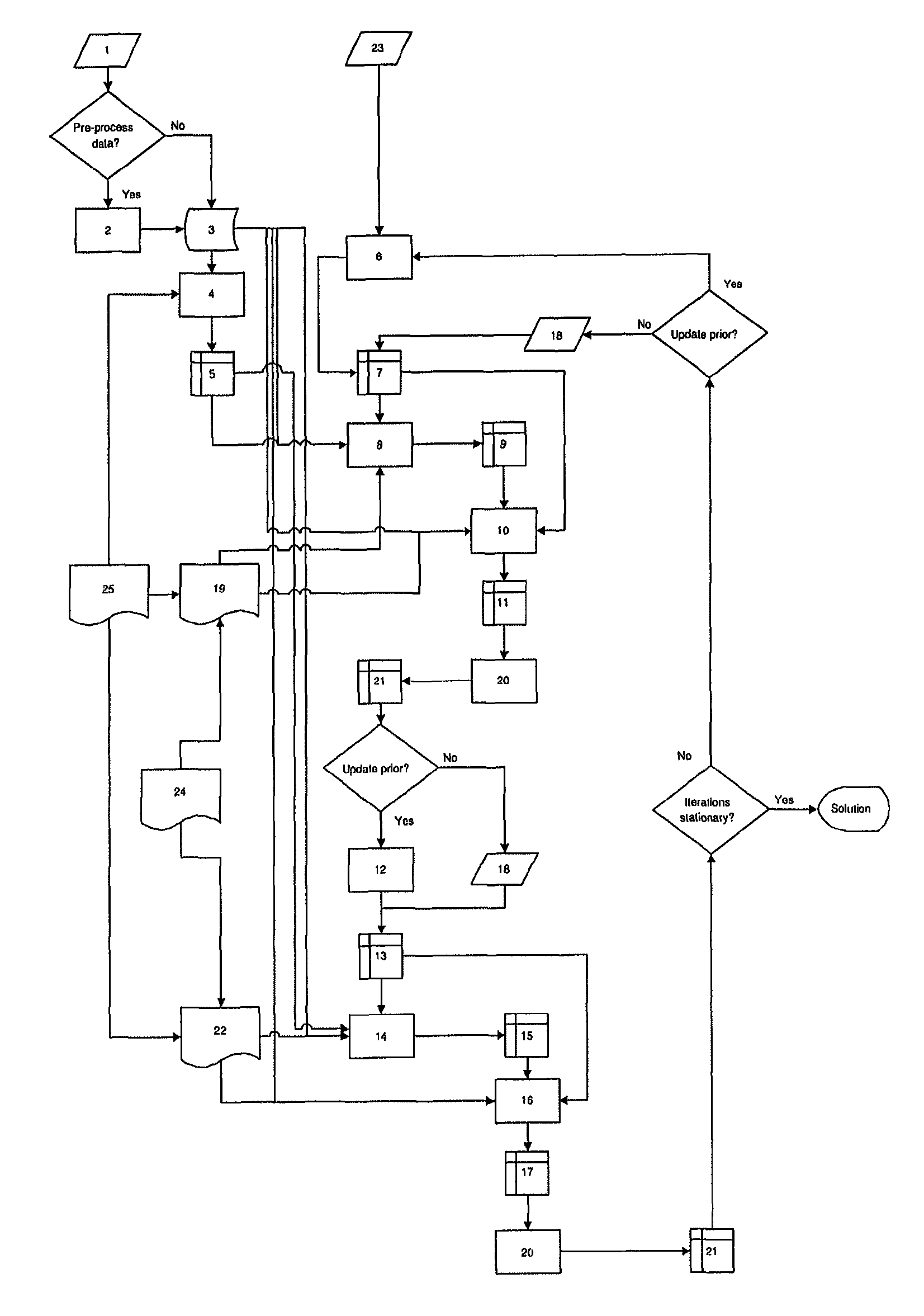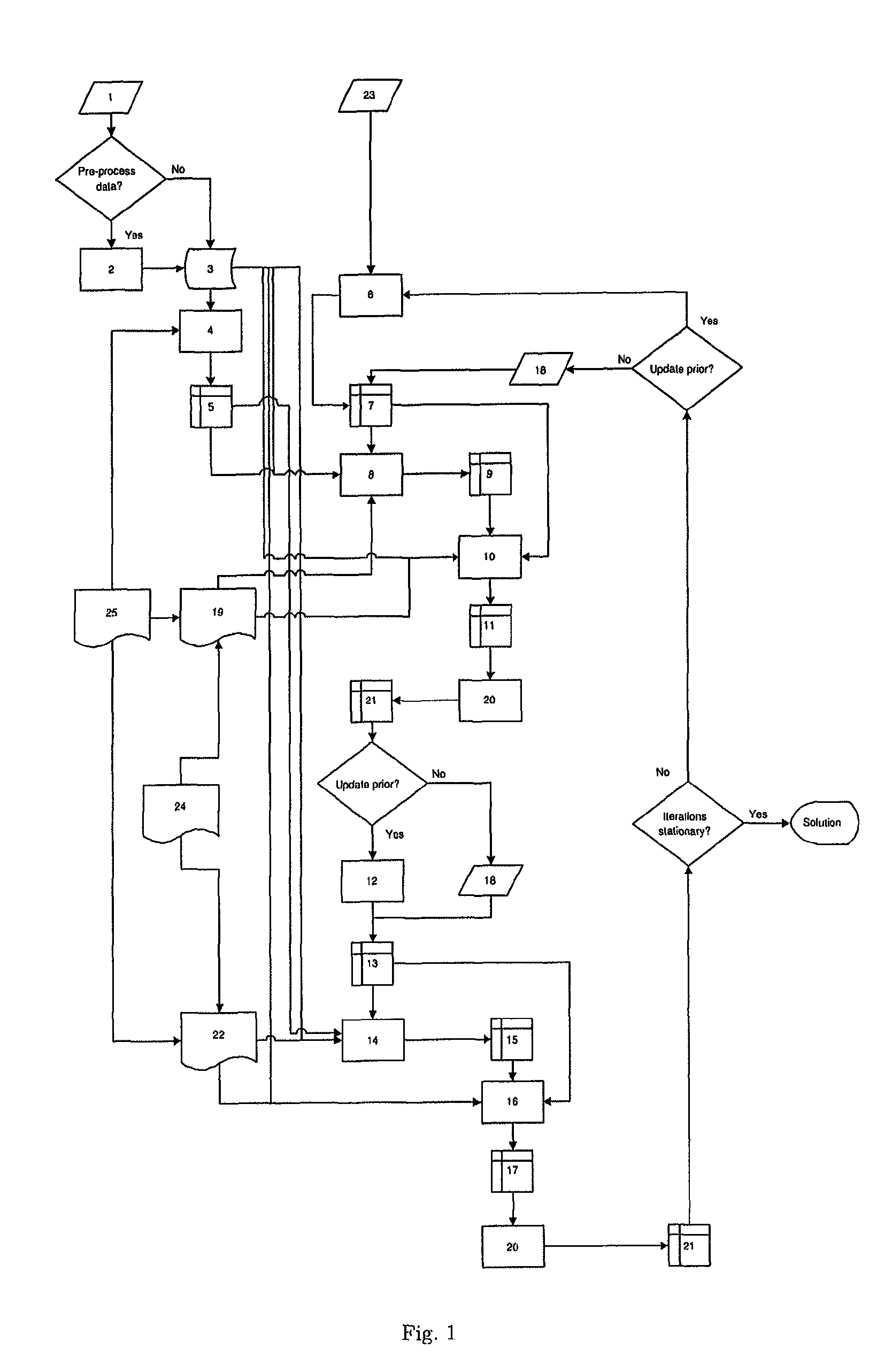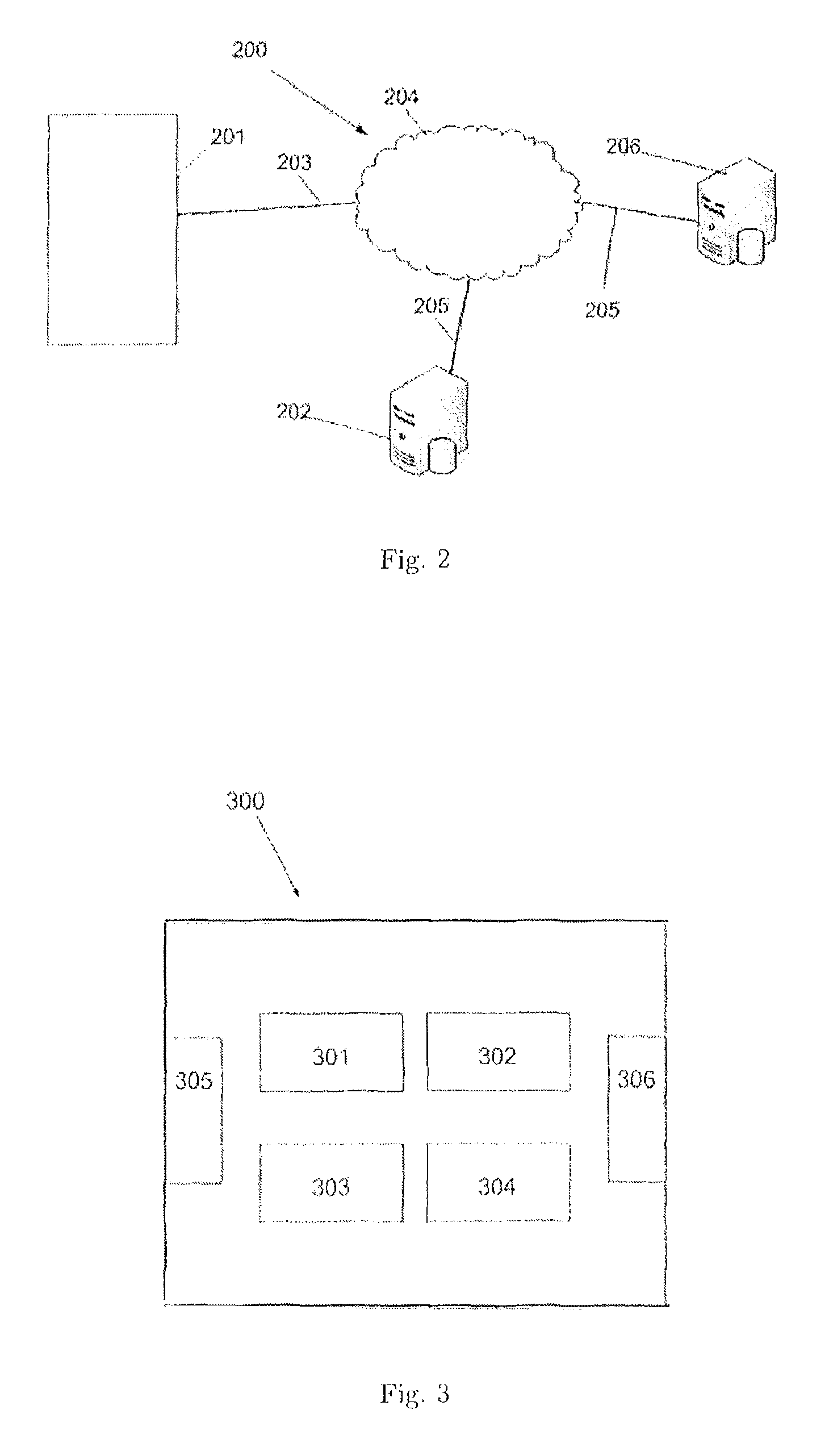Iterated variational regularization combined with componentwise regularization
a componentwise and variational regularization technology, applied in the direction of instruments, material analysis using wave/particle radiation, computation using denominational number representation, etc., can solve the problem that the inverse problem is severely ill-posed only in one component, and achieve the effect of stable reconstruction
- Summary
- Abstract
- Description
- Claims
- Application Information
AI Technical Summary
Benefits of technology
Problems solved by technology
Method used
Image
Examples
example 5.13
[0080]A typical example is when ⊂(Ω,) (for some domain Ω⊂) denotes a fixed subset representing the feasible -components. In particular, it is assumed that all functions in are non-negative and can e.g. be a finite dimensional vector space representing unknown parameters that need to be recovered as well but that are not the primary interest. If the multicomponent inverse problem is not ill-posed w.r.t. the -component, then we recover that component by a simple least squares approach. In this case the reconstruction method Rτ,λ2(·;τ,f)2(·;f) will not have any associated parameter selection rule λ2(·;f,τ) and it will not depend on any prior τ (so we therefore do not have any mooting operator F2), so steps (8)-(9) above are ignored and the reconstruction operator in step (10) is given by
[0081]ℛ2(g;f):=argminh∈γ / 2𝒟(𝒯(f,h),g).
In the case with finite data (so for some m) one often defines the Hilbert space norm D as
D(c,g):=√{square root over ((c−g)t·Σ−1·(c−g))}{square root over (...
example
[0140]Finally we show an example of how the of the invention on the inverse problem in ET. We create ET data using a simulator based on (21) with the forward operator in (22). The phantom, i.e. the object to be reconstructed, is the RNA polymerase II, and actual scattering potential is calculated from the protein data base information of the RNA polymerase II. The size of the RNA polymerase II is about 400 kDa and it is assumed to be embedded in an amorphous ice slab that is 50 nm thick. The simulator allows generation of images similar to those recorded in an electron microscope. In the simulator tests, an underfocus of 1 μm was used and a full single axis tilt series was produced comprising 121 tilts between −60° and 60°.
[0141]The three-dimensional reconstruction from the present innovation is compared both to the original phantom (i.e. the true answer) and to the filtered backprojection reconstruction (FBP) that has been regularized by an additional low-pass filtering (low-pass F...
PUM
 Login to View More
Login to View More Abstract
Description
Claims
Application Information
 Login to View More
Login to View More - R&D
- Intellectual Property
- Life Sciences
- Materials
- Tech Scout
- Unparalleled Data Quality
- Higher Quality Content
- 60% Fewer Hallucinations
Browse by: Latest US Patents, China's latest patents, Technical Efficacy Thesaurus, Application Domain, Technology Topic, Popular Technical Reports.
© 2025 PatSnap. All rights reserved.Legal|Privacy policy|Modern Slavery Act Transparency Statement|Sitemap|About US| Contact US: help@patsnap.com



